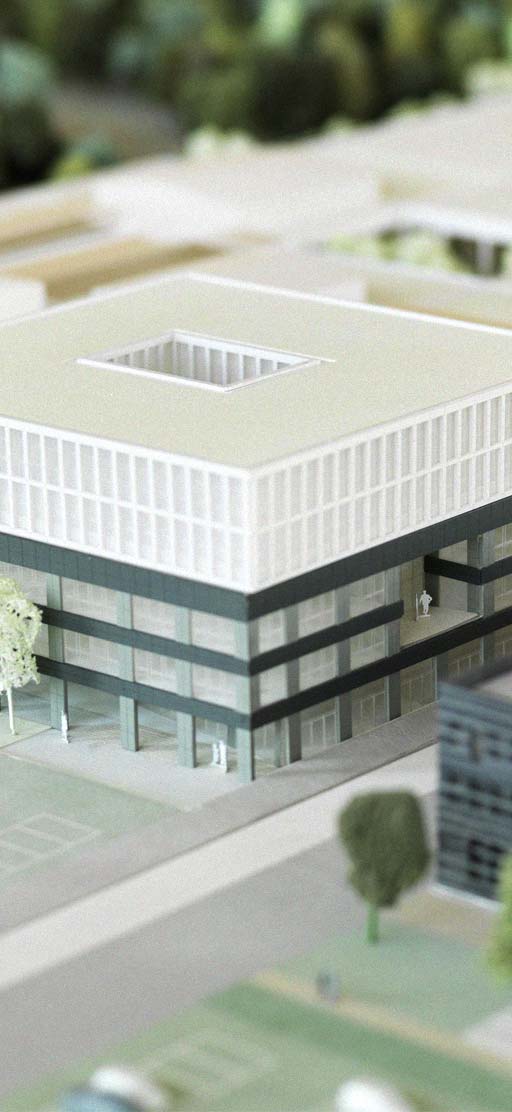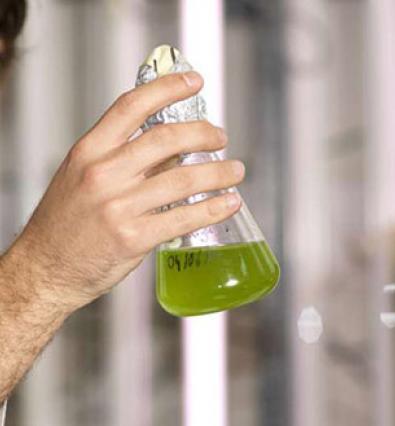 The Lab, co-supervised by CentraleSupélec, Sorbonne University, Paris-Saclay University and the CNRS, centers on information and power applications.
The Lab, co-supervised by CentraleSupélec, Sorbonne University, Paris-Saclay University and the CNRS, centers on information and power applications.

GeePs has a staff of 240 people with more than 100 permanent. It is divided into three departments:
PHEMADIC
PIEM
E2DC
GeePs was chosen to participate in two advanced research networks in the Paris region: The Physics Triangle and Digiteo, because of a triple approach to research (theory/experiment/ numerical modeling). The departments are partners in the Excellence Initiative (Nano-Saclay and the LaSIPS LABEXs) and interact with many academic and industrial partners at both national and international levels.
Physics and Electronics of Materials, Devices, Interfaces and Contacts (PHEMADIC)
The "Physics and Electronics of Materials, Devices, Interfaces and Contacts" department has a staff of 21 permanent people (14 researchers and 7 engineers) along with 15 PhD students or post-doctoral researchers.
The main objectives of the department are to develop innovative characterization tools, to study materials and device properties as well as interfaces and contacts. Three main application fields are targeted:
- Photovoltaics: silicon solar cells and heterojunctions, multijunctions and III-V-N solar cells, new chalcogenides, SiGeC thin films, perovskites, organics solar cells, PV modules
- Opto/nanoelectronics: micro/nanowires, III-V compounds and nitrides, 2D heterojunctions, diamond, UV detectors, mixed valence oxides, Re-Rams, MEMS/NEMS
- Electrical contacts: fiability, functionalization, surface modification
A wide range of experimental facilities forming several characterization platforms allow us to investigate fundamental as well as application oriented issues and to efficiently interact with many academic and industrial partners at both national and international levels. We cover the whole scale range of physical and electronic properties from macroscopic aspects (large panel of various photocurrent spectroscopies in DC, AC and transient modes, admittance spectroscopies, optical spectroscopies, tribology, fretting, characterization of photovoltaic cells and modules) to the microscopic scale (electron spectroscopies, XPS, UPS, Auger, micro-Raman and micro-luminescence spectroscopies) and down to the nano-scale (AFM, conductive probe AFM with the home made extensions Resiscope and Capascope. These characterization facilities are complemented by a long-term expertise in modeling that is supported by either commercially available or on in-house developed simulation software.
PhysIcs and Engineering of electroMagnetism (PIEM)
The department « Physics and Engineering of ElectroMagnetism” includes 25 permanent researchers, 5 engineers and 20 non permanents members (PhD students, post-doctoral researchers) involved in different areas of Electromagnetism. The department covers a wide range of frequencies from static fields to microwaves and THz. It is subdivided into five major topics which extend from behavior laws of materials to complex systems analysis:
- Multiphysics modeling and coupled problems
- Non destructive electromagnetic evaluation of materials and structures
- Electromagnetic compatibility
- Exposition of human beings to electromagnetic fields
- Waves in complex environment
The objectives of the department are to develop new methodologies based on electromagnetic modeling and experimental approaches to :
- Investigate the interactions between electromagnetic fields and natural or artificial media
- Control waves and fields in complex environment
- Build new models for the design of electromagnetic systems and for multi-physics studies
- Different experimental facilities are available for basic research or industrial partnership : reverberating chambers (of different sizes), anechoic chambers with two kind of near field probe arrays, a time-reversal reverberating chamber allowing coherent directive and polarized wavefront generation.
Energy, Electronics, Design and Control
The department “Energy, Electronics, Design and Control” comprises 34 permanent researchers, 6 engineers and 50 PhD students / post-doc researchers, involved in 5 different areas of Electrical Engineering.
- The topic “Actuators and Sensors” is dedicated to electromechanical conversion (magnetic and piezoelectric). Various types of machines are both studied and designed. Optimal methodologies and design tools are developed (analytical models, finite element method, genetic algorithms, space mapping...). Experimental benches are sized to test devices up to 80kW and 15 000 rpm. Studies on the control of such devices are also carried out (sensorless control, use of FPGA…). Fault diagnosis in electrical machines is also the subject of research (specific sensors, non-intrusive fault detection...).
- The topic “Microgrid & Power Electronics” focuses on multi-source microgrids and onboard power systems, especially in DC systems mixing HVDC and LVDC buses. Research topics include the integration of local energy production (either controlled - fuel cell, or uncontrolled - solar or wind energy), new types of power consumption (consumer electronics and electric vehicles), the design of reliable connected electronic power converters or systems. In order to interface sources, loads and other grids, the development of optimal power management strategies (taking into account internal or external constraints), and the development of microgrid health monitoring methods are also being investigated.
- The topic “Electrical networks” aims at increasing the flexibility of power systems in order to ease the integration of new sources (renewables) and new loads in the electric power system and in distribution grids. The main research areas are (1) network operation (ancillary services, stability), (2) demand flexibility (plug-in vehicles, demand response), (3) DC systems (converter control, interaction between AC and DC grids, HVDC systems), (4) perturbations and protection (harmonics, fault detection), (5) schemes and regulation for economic valuation of the flexibility.
- The topic “Mixed-signal integrated circuits and microsystems” integrates many diverse activities on mixed digital and analogic electronic systems. Application domains of the studied methods and concepts involve issues from fundamental research, to consumer electronics (telecommunications, civil transportation), high performance electronics (radar, aviation, aerospace, industrial), as well as medical electronics. The main research areas are (1) physics-analog conversion, (2) analog electronics design methods, (3) analog to digital conversion, (4) signal processing and non-ideality compensation.
- The “Electrical discharges and arcs” topic pursues both fundamental and industry-oriented research concerning both electrical discharges and arcs at atmospheric pressure and in vacuum. The work can be roughly divided into two broad categories: (1) the study of electrical discharges and arcs from an electrical engineering perspective, where the goal is either to prevent their occurrence or mitigate their effects (high voltage insulation under vacuum and partial discharges in onboard power systems), and (2) their study as a physical or chemical process, where the goal is to use the particular properties of the plasma for some certain objective (surface and gas treatment).
GeePs 2023 report
Download HERE
CONTACT
Directeur : Emmanuel Odic
Email : emmanuel.odic[at]centralesupelec.fr





